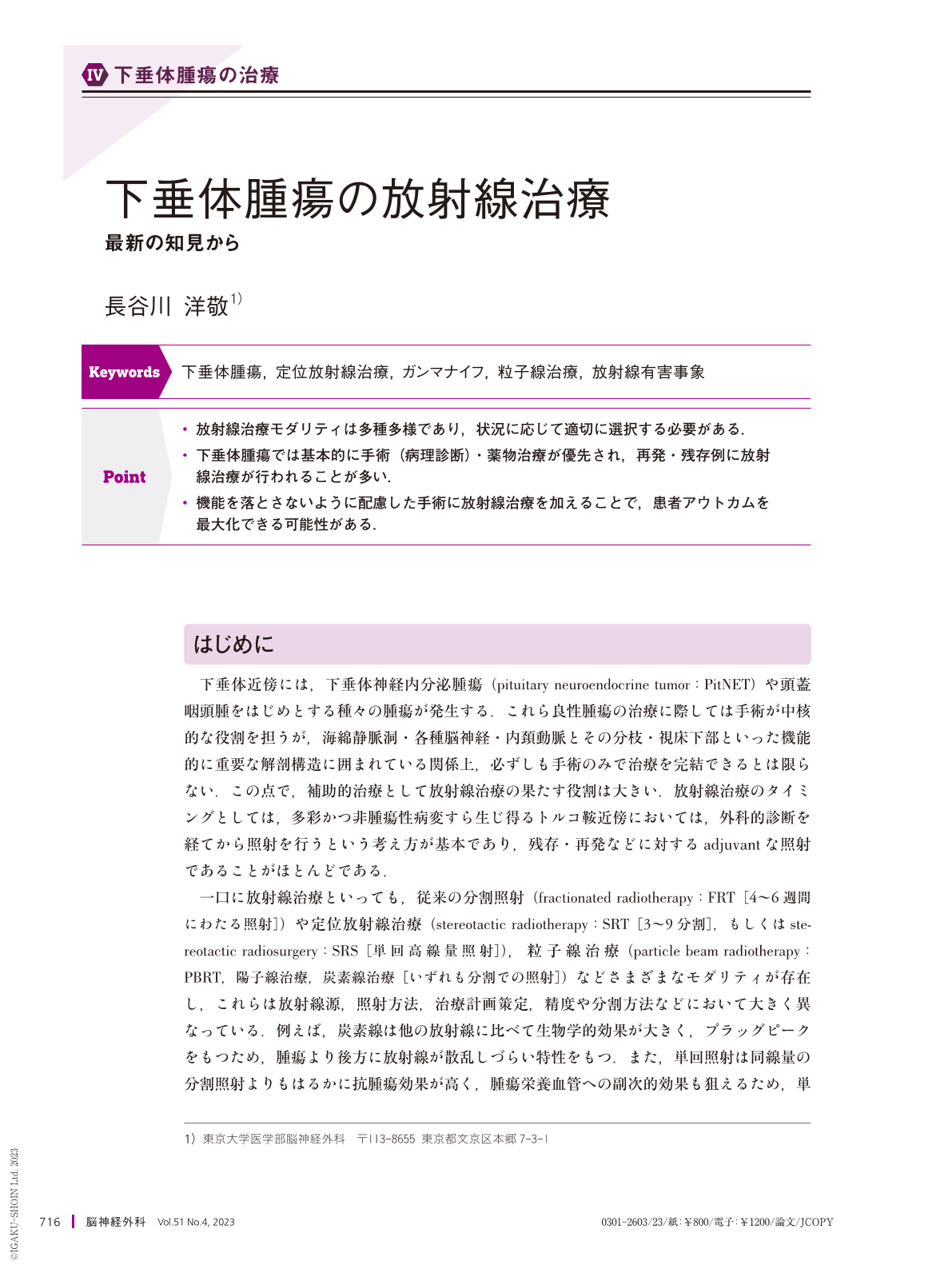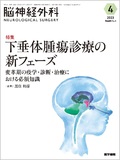Japanese
English
- 有料閲覧
- Abstract 文献概要
- 1ページ目 Look Inside
- 参考文献 Reference
Point
・放射線治療モダリティは多種多様であり,状況に応じて適切に選択する必要がある.
・下垂体腫瘍では基本的に手術(病理診断)・薬物治療が優先され,再発・残存例に放射線治療が行われることが多い.
・機能を落とさないように配慮した手術に放射線治療を加えることで,患者アウトカムを最大化できる可能性がある.
Various tumors, such as pituitary neuroendocrine tumors(PitNETs)and craniopharyngiomas, can arise in the sellar/parasellar region. Although surgical removal is the standard therapeutic modality for these pathologies, a single surgery may not be sufficient to provide durable tumor control, given the surrounding critical neurovascular structures. Therefore, adjunctive radiotherapy has a substantial role in treating these neoplasms. There are wide variety of radiotherapy modalities, including photon-based fractionated radiotherapy, stereotactic radiosurgery/radiotherapy, and proton- and carbon-ion beam-based radiotherapies. All modalities have their own advantages and disadvantages and thus need to be selectively used after consideration of their characteristics and existing evidence. In addition, the radiation sensitivity of normal anatomies should be kept in mind. In particular, the optic apparatus is very sensitive to ionizing radiation; thus, meticulous care needs to be taken when creating a radiation plan to avoid optic neuropathy. Overall, if properly used, radiotherapy can provide excellent durable tumor control for PitNETs, craniopharyngiomas, and even chordomas. A judicious combination of surgery and radiotherapy plays a key role in functional preservation without affecting tumor control or overall survival.

Copyright © 2023, Igaku-Shoin Ltd. All rights reserved.


